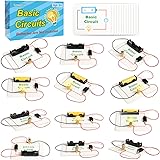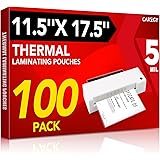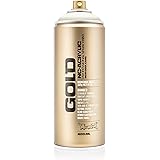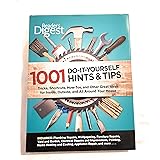Unlock the Secrets to a Spotless Home: Ingenious DIY Cleaning Hacks You Need to Know
Are you constantly searching for quicker, smarter ways to tackle household chores and maintain a sparkling home? In our fast-paced lives, finding efficient solutions to common cleaning dilemmas is more valuable than ever. The video above offers a whirlwind tour of clever “5-minute crafts” and quick DIY hacks designed to clean, tidy up, and organize your house with astonishing speed. However, to truly master these techniques and understand the “why” behind their effectiveness, diving deeper into the nuances of each hack can transform your cleaning routine from tedious to triumphant. While the visual demonstrations provide compelling “BEFORE” and “AFTER” evidence, the science and practical tips behind these amazing transformations are equally fascinating. This article expands upon the brilliant ideas presented in the video, providing you with the comprehensive insights needed to implement these **DIY cleaning hacks** confidently and effectively, ensuring your home is not just clean, but truly pristine.Revolutionize Your Carpet Cleaning with Everyday Items
One of the most common household challenges involves keeping carpets fresh and stain-free. Traditional carpet cleaners can be expensive and often contain harsh chemicals. In contrast, the video introduces a fascinating and surprisingly effective method for tackling carpet stains using shaving foam. Shaving foam, often overlooked as a cleaning agent, contains surfactants and mild detergents that are adept at lifting dirt and grime from fabric fibers. To implement this ingenious **carpet cleaning hack**, simply apply a generous amount of shaving foam directly onto the stained area, allowing it to sit for approximately 20-30 minutes. This allows the foam to penetrate the fibers and encapsulate the dirt, preparing it for removal. Afterwards, gently blot the area with a clean, damp cloth, moving from the outside of the stain inwards to prevent spreading. For stubborn marks, a soft brush can be used carefully.
Another powerful, albeit less common, ingredient highlighted for carpet care is boric acid. Boric acid works as an antiseptic, fungicide, and a mild abrasive, making it suitable for certain types of stains, particularly those with mold or mildew components. It also acts as a deodorizer, neutralizing unpleasant odors embedded deep within carpet fibers. However, due to its chemical nature, it is crucial to handle boric acid with caution, wearing gloves and ensuring proper ventilation. Mix a small amount with water to create a paste, apply sparingly to the stain, let it dry completely, and then vacuum thoroughly. Always perform a patch test in an inconspicuous area first, especially when using stronger agents like boric acid, to ensure no discoloration or damage occurs to your carpet.
Unlocking the Power of Pantry Staples: Natural Cleaning Heroes
Many of the most effective **home cleaning tips** don’t require specialized products; they can be found right in your kitchen pantry. The video hints at the versatile power of everyday items like aspirin, flour, soda, vinegar, and salt, which collectively form a formidable arsenal against dirt and grime. For instance, aspirin, containing salicylic acid, is an excellent rust remover. A paste made from crushed aspirin and water can be applied to rust stains on porcelain or fabric, allowed to sit, and then wiped away, revealing a much cleaner surface. This acid helps to dissolve the iron oxides that cause rust, providing a remarkably simple solution to a common problem.
Conversely, the combination of baking soda (soda) and vinegar creates a mild effervescent reaction that can power through grease, grime, and odors. Baking soda, a mild abrasive and natural deodorizer, can be used to scrub sinks, countertops, and even tackle stubborn food residues in pots and pans. When paired with vinegar, an acetic acid, it forms carbonic acid, which then breaks down, releasing carbon dioxide gas. This fizzing action helps to lift dirt and break down deposits, making it an ideal, eco-friendly solution for draining clogs or refreshing drains. Furthermore, salt acts as a gentle abrasive, perfect for scouring cast iron or removing stains from cutting boards, while flour can be used to polish metal surfaces like copper or brass, creating a stunning shine without harsh chemicals.
Tackling Tricky Spots: Headphones, Tupperware, and Shoe Soles
Some of the most satisfying transformations involve cleaning items that often seem beyond redemption, such as dirty headphones or discolored tupperware. The video suggests using Colgate toothpaste for dirty headphones, a clever trick due to toothpaste’s mild abrasive properties and disinfectants. A small dab of non-gel toothpaste gently applied with a cotton swab can effectively remove grime and earwax from the plastic components of headphones. Following this, a soak in hydrogen peroxide is shown. Hydrogen peroxide is a powerful antiseptic and whitener. For optimal results and safety, use a low concentration (e.g., 3%) and ensure only the non-electronic parts are submerged, avoiding any internal circuitry. This dual approach leaves your headphones sanitized and looking significantly cleaner, enhancing both hygiene and appearance.
Cleaning plastic food containers, or Tupperware, often presents a challenge, especially when dealing with stubborn oil stains or lingering food odors. While the video briefly highlights “CLEAN TUPPERWARE,” the real magic lies in using a mixture of baking soda and hot water, or even a lemon wedge. Baking soda is highly effective at absorbing odors and acting as a mild abrasive to scrub away oily residues. For tough stains, creating a paste of baking soda and a little water, spreading it inside the container, and letting it sit overnight before washing can yield impressive results. Alternatively, harnessing the power of sunlight can naturally bleach away tomato-based stains from plastic. Simply wash the container, place it outside in direct sunlight for a few hours or a day, and watch the stains fade, often disappearing completely.
Footwear, particularly white shoe soles, can quickly accumulate dirt and scuff marks, becoming a visible indicator of wear. The hack “CLEAN SOLES” is a lifesaver for shoe enthusiasts. Beyond toothpaste, which works well, hair removal cream is surprisingly effective for brightening white rubber soles. Its alkaline compounds are designed to break down proteins (hair), and this same action can surprisingly lift and dissolve stubborn dirt and organic stains from shoe soles. Apply a thin layer to the rubber, let it sit for a few minutes (no more than 5-10, as it’s potent), and then wipe clean with a damp cloth. Always patch test first, as chemical reactions can vary, but many find this method incredibly efficient for restoring that pristine white finish. This **quick household hack** saves countless pairs of shoes from early retirement.
Beyond the Basics: Clever Hacks for Brushes and Other Surfaces
The video also touches on revitalizing everyday items, such as making a “CLEAN BRUSH” “MORE FLUFFY.” Hairbrushes, over time, can accumulate hair, product residue, and skin cells, making them less effective and potentially unhygienic. To restore their fluffiness and cleanliness, begin by removing as much loose hair as possible. Then, prepare a solution of warm water, a few drops of shampoo, and a tablespoon of baking soda. Soak your brushes (non-wooden handles preferred) in this mixture for 15-30 minutes. The baking soda helps to break down oil and residue, while the shampoo cleanses. Rinse thoroughly under running water, ensuring all suds are gone, and then let them air dry bristles-down on a towel. This simple process not only cleans but also restores the bristles, making your brush feel like new.
In various cleaning scenarios, improvisational tools can be incredibly effective. For those moments when you think “NO SPONGE?”, a simple paper towel can become a surprisingly versatile tool. While not ideal for heavy scrubbing, a paper towel is perfect for quick spills, drying surfaces, and polishing glass or mirrors when paired with a suitable cleaner. Its absorbency makes it excellent for soaking up liquids, and its disposable nature is convenient for particularly messy tasks. For example, coffee filters, typically associated with brewing, are fantastic for lint-free cleaning of screens (TVs, laptops, smartphones) and glass surfaces due to their non-abrasive and lint-free composition. Their finely woven fibers excel at capturing dust without leaving streaks, offering a streak-free shine that traditional cloths might miss, showcasing another fantastic **easy cleaning solution** that’s often overlooked.







